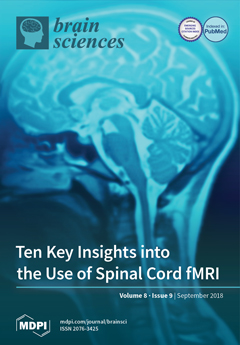This study is aimed at relating social cognition in Huntington’s Disease (HD) to plasma levels of the social hormone oxytocin (OT). Indeed, HD patients commonly display reduced social skills and OT is involved in bonding behavior and improved recognition of facial emotions. Twelve mild-symptomatic HD patients (stage II Shoulson & Fahn) and 11 gender/age matched controls (healthy controls, HC), without concurrent psychiatric disorders, were investigated at baseline (T
0) for OT plasma levels and social cognition through an extensive battery of neuropsychological tests. Social cognition was also re-examined after two years (T1) in 8 of the 12 patients. Results showed a trend for reduced T
0-OT levels in HD vs. HC, mean ± stardard deviation: 6.5 ± 2.4 vs. 9.9 ± 7.2 pg/mL, without reaching statistical significance. At T
0, patients showed significantly lower performances than controls at the “Faux-Pas” and “Strange Stories” tests (
p < 0.05;
p < 0.01); a reduced perception of visual emotions (
p < 0.01) and verbal stimuli (
p < 0.01) was also reported, involving anger, fear, and sadness (
p < 0.05;
p < 0.01). Additionally, in the HD population, OT concentrations positively correlated with T1-performances at Neutral\Faux-Pas test (
p < 0.05), whereas the cognitive Montreal Cognitive Assessment (MoCA) and Mini Mental State Examination (MMSE) scores positively correlated with psychosocial perception at the “Strange Stories” and Karolinska Directed Emotional Faces (KDEF) tests (
p < 0.05). This study, despite its limitations, supports correlations between OT and HD social cognition, suggesting a possible therapeutic use of this hormone. More subjects and additional body tissues/fluids, such as cerebrospinal fluid, should be investigated to confirm this hypothesis.
Full article






